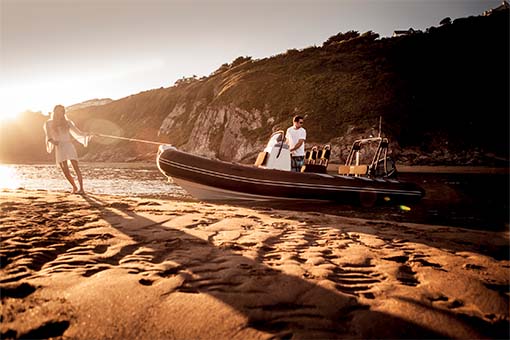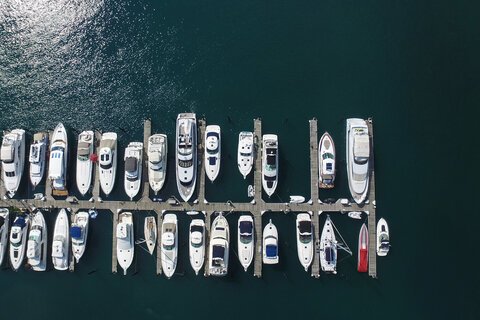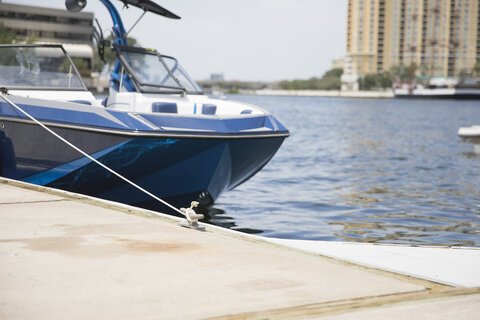A dinghy can have several definitions but for our purposes here, we’ll focus on it being a tender to a larger recreational boat. A dinghy is used as a commuter to go ashore or to visit other boats and it can venture where the larger vessel cannot. Deciding which dinghy is the best for you is based on its intended purpose and how you will use it. To narrow the options, consider the following:
Size
The adage goes that you should purchase the biggest dinghy your boat can carry. Large dinghies have a significant carrying capacity for both people and cargo such as groceries or jerry cans of fuel and water and that makes life easier when cruising or living aboard. However, if you often boat alone or have a small primary vessel, you need to compare the benefit of capacity to the dinghy’s weight and storability.
Will you need to lift the dinghy aboard yourself or will you carry it on davits? Will you be the only one hauling it ashore on beach landings? Will you need to tow a large dinghy behind the boat (rather than carrying it) thereby losing speed and fuel efficiency? Bigger isn’t always better so consider your boating style and what makes sense.
Construction & Materials
How the dinghy is built and what it’s made of are key factors. Rigid dinghies may be made of wood, fiberglass or rotomolded plastic. They tend to have integrated keels so they track better when rowed but may be heavier and less storable than inflatables, which can be rolled up and tucked into a locker when not in use.
Rigid inflatable boats (RIBs) have collars usually made of Hypalon or PVC with fiberglass or aluminum floors. RIBs won’t scratch or dent the larger boat when tied alongside, may be lighter (depending on the construction of the floor), and are usually more stable with greater buoyancy than their hard counterparts. RIB floors are either single or double skinned. Double floors provide a quieter and more comfortable ride but are heavier.
RIB fabric can be either PVC-coated polyurethane cloth or Hypalon, which is a neoprene-coated nylon that is less susceptible to UV degradation and may be easier to repair with a patch kit when punctured. Hypalon is more expensive may have a longer service life if you boat in the tropics or year-round. Either material will last longer if covered when not in use.
Design & Features
The basic design of a dinghy tender, especially a RIB, includes a bow, sides (gunwhales or tubes), a thwart that provides additional seating and a transom board with a drain. For the basic commuter, this will be sufficient, however if you use the dinghy for extended shore exploration, distance cruising when fishing or diving, or you’d just like added comfort, a dinghy with a dedicated driver’s console and more plush seating may fit your needs better. Such dinghies are usually larger to accommodate the “furniture” (heavier) and may have lockable storage in the bow to stow valuables if you leave them at a restaurant dock or on a beach unattended.
Some other advanced dinghy features include integrated running lights, electronics such as a VHF radio and a fuel tank. You’ll definitely want to check for adequate handholds or a fixed line running down the side of the tubes. These handles help you drag the dinghy ashore or to hang on during a bumpy ride. A strong D-ring built into the stem is better than a soft attach point if you will be towing the dinghy frequently or far. Attach points fixed to the inside floor will help when lifting the dinghy onto davits but otherwise may be toe stubbers.
Horsepower Rating
Each dinghy is rated for maximum horsepower of outboard engine and that should not be exceeded for safety reasons. Large outboards can be heavy and can overpower the basic structural integrity of the small boat.
If you want to get on plane and go fast, especially when the boat is loaded, you’ll need a larger outboard. Smaller gas, propane or electric outboards are for slow cruising on a dinghy that’s more compact so if you’re just visiting other boats in the anchorage, that’s all you’ll need. If however, you’re expecting to pull kids on water toys, look for a larger engine and therefore a bigger dinghy.
Affordability
Size, materials, features and horsepower all translate into dollars so a combination of the above also defines how much dinghy you can afford. The more complex and better outfitted the dinghy, the more expensive. And it’s likely you’ll want a large outboard on a big expensive dinghy so pretty soon, your tender may be approaching the cost of the vessel that it’s supposed to serve.
Much to Consider
So how, where and with whom you use a dinghy are guiding factors in selecting your next tender. Will you need to haul many people and much equipment or will you be boating alone or as a couple? Will you use the dinghy for short runs to the beach in your shorts and T-shirt or will you make longer excursions to a dockside restaurant dressed for dinner and will require more seating and less splashing? Will you let your kids play with the dinghy in which case you may want something smaller, simpler, cheaper and less powerful. These are just a few questions you need to ask yourself before finding the “perfect” dinghy.


